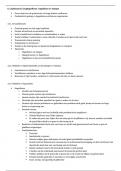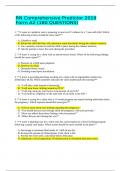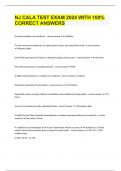Exam (elaborations)
QMB 3200 Final Exam | Complete Solutions (Answered)
- Course
- Institution
QMB 3200 Final Exam | Complete Solutions (Answered) Dataset all the data collected for a particular analysis Data The facts & figures collected, analyzed, and summarized for presentation and interpretation. Element The entity on which data is collected. Variable a characteristic of interest of a...
[Show more]












